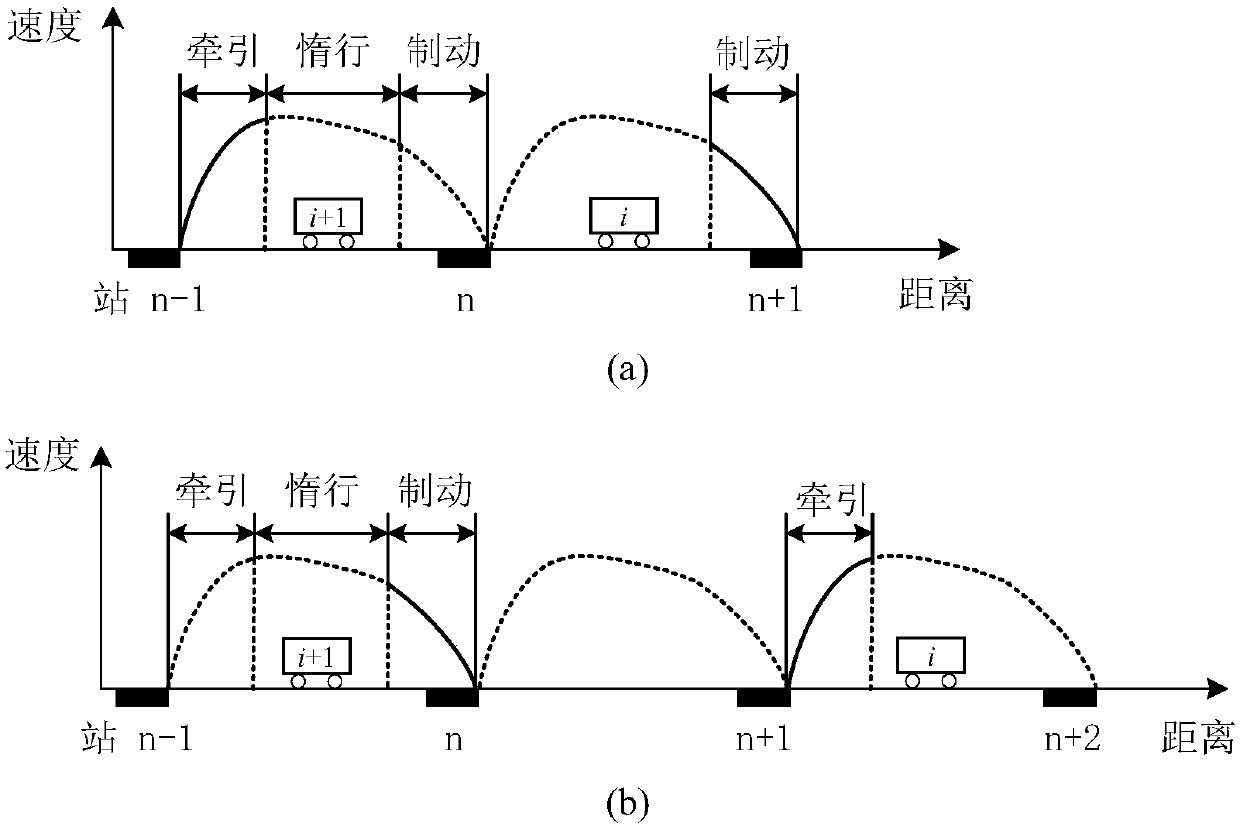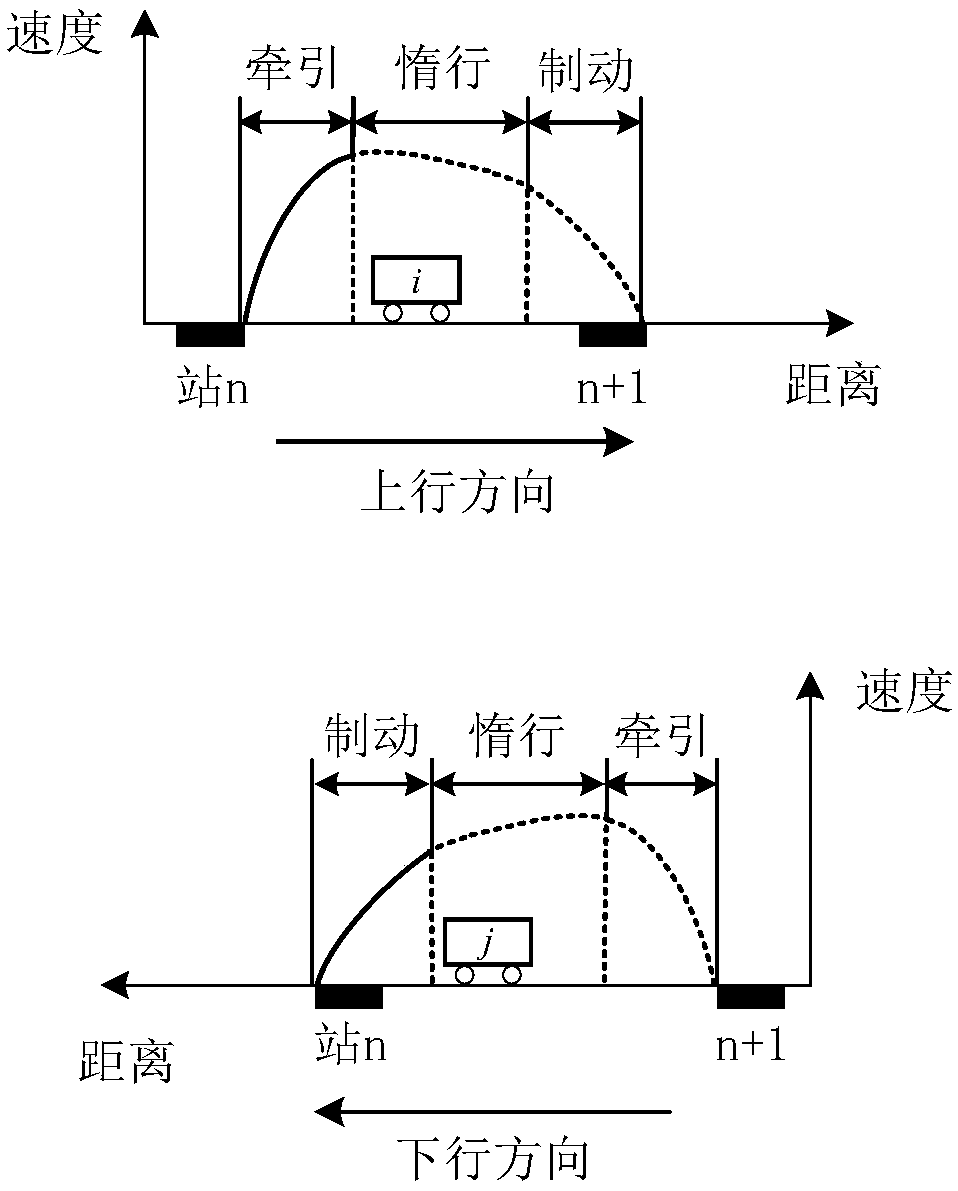An optimization method for improving the subway train regenerative braking energy utilization rate
A technology of regenerative braking and optimization methods, applied in design optimization/simulation, special data processing applications, instruments, etc., can solve problems such as increased cost, large transmission loss, and increased equipment.
- Summary
- Abstract
- Description
- Claims
- Application Information
AI Technical Summary
Problems solved by technology
Method used
Image
Examples
specific Embodiment
[0056] Specific examples are as follows: Step 1: According to the overlapping time of traction and braking of adjacent trains in the same power supply interval, the utilization rate of regenerative braking energy is equivalently expressed, and according to the overlapping time of traction and braking of adjacent trains in the same power supply interval, it can be Express the regenerative braking energy as:
[0057] E. u =E r (i,i+1)×T(i,i+1) / t b (i,i+1) (1)
[0058] Among them, E u Indicates the regenerative braking energy being utilized, E r Indicates the regenerative braking energy generated by train i or i+1 during the braking process, T(i,i+1) indicates the overlapping time of train i and i+1 traction and braking phases, t b (i,i+1) represents the braking time of train i or i+1.
[0059] According to the overlapping time of traction and braking phases of train i and i+1 and the braking time of train i or i+1, the utilization rate of regenerative braking energy λ(i,i+...
PUM
 Login to View More
Login to View More Abstract
Description
Claims
Application Information
 Login to View More
Login to View More - R&D
- Intellectual Property
- Life Sciences
- Materials
- Tech Scout
- Unparalleled Data Quality
- Higher Quality Content
- 60% Fewer Hallucinations
Browse by: Latest US Patents, China's latest patents, Technical Efficacy Thesaurus, Application Domain, Technology Topic, Popular Technical Reports.
© 2025 PatSnap. All rights reserved.Legal|Privacy policy|Modern Slavery Act Transparency Statement|Sitemap|About US| Contact US: help@patsnap.com



